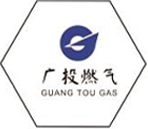
Nov . 24, 2024 03:04
Back to list
gas pressure reducing station
Understanding Gas Pressure Reducing Stations
Gas pressure reducing stations play a critical role in the distribution of natural gas across various applications, from residential heating to industrial processes. As natural gas travels through extensive pipeline networks, it is transported at high pressures to ensure efficiency and safety. However, before the gas reaches its end-users, it must be reduced to a pressure that is suitable for safe consumption. This is where gas pressure reducing stations come into play.
What is a Gas Pressure Reducing Station?
A gas pressure reducing station is a facility designed to reduce the high pressure of gas coming from a transmission line to a much lower pressure suitable for distribution. These stations are typically equipped with pressure regulators, valves, and control systems that ensure the gas is delivered at a constant and safe pressure. This process is crucial not only for safety but also for protecting downstream equipment from potential damage due to high-pressure gas.
Operational Mechanism
At its core, a gas pressure reducing station operates through a series of carefully calibrated mechanisms. Once the high-pressure gas enters the station, it passes through a filter that removes impurities and debris. Next, it encounters a pressure regulator, which automatically adjusts and maintains the gas pressure within a specific range, depending on the demand from end-users. These regulators can either be of the direct-acting type, which respond immediately to changes in pressure, or pilot-operated types that provide more precise control.
The station is also equipped with safety devices, such as pressure relief valves, to prevent overpressure situations. These valves vent excess gas to the atmosphere, thereby ensuring that the system operates within safe limits. Additionally, advanced monitoring and control systems are integral to modern gas pressure reducing stations. These systems can remotely monitor pressure levels and flow rates, allowing for quick adjustments and maintenance management.
gas pressure reducing station

Importance of Gas Pressure Reducing Stations
The importance of gas pressure reducing stations cannot be overstated. First and foremost, they ensure the safe delivery of gas to residential, commercial, and industrial customers. By preventing excessive pressure, these stations reduce the risk of pipeline failures and accidents that could lead to severe safety hazards.
Moreover, these stations play a pivotal role in the efficient operation of gas distribution systems. By regulating gas pressure, they facilitate the balance between supply and demand, allowing for optimal usage of resources. This is particularly important during peak demand times, such as cold winter months when heating requirements surge.
Additionally, environmental considerations are increasingly influencing the design and operation of gas pressure reducing stations. Incorporating advanced technologies and renewable energy sources can help reduce the carbon footprint associated with gas distribution.
Conclusion
In conclusion, gas pressure reducing stations are essential components of natural gas infrastructure. They ensure safe, efficient, and reliable delivery of gas to consumers while minimizing potential hazards. As the demand for natural gas continues to grow, along with the push for greener energy solutions, the role of these stations will become increasingly important in the evolving landscape of energy distribution. Understanding their function and significance is crucial for anyone involved in the energy sector, from engineers to policy-makers.
Next:
Latest news
-
Safety Valve Spring-Loaded Design Overpressure ProtectionNewsJul.25,2025
-
Precision Voltage Regulator AC5 Accuracy Grade PerformanceNewsJul.25,2025
-
Natural Gas Pressure Regulating Skid Industrial Pipeline ApplicationsNewsJul.25,2025
-
Natural Gas Filter Stainless Steel Mesh Element DesignNewsJul.25,2025
-
Gas Pressure Regulator Valve Direct-Acting Spring-Loaded DesignNewsJul.25,2025
-
Decompression Equipment Multi-Stage Heat Exchange System DesignNewsJul.25,2025

